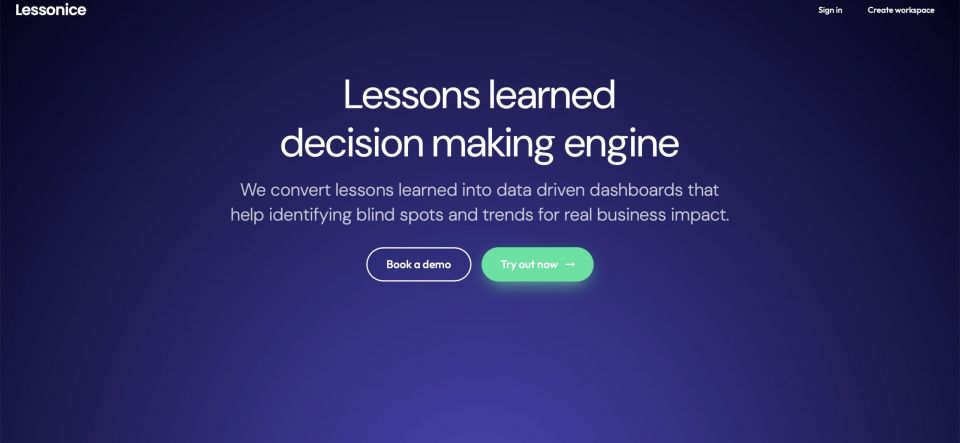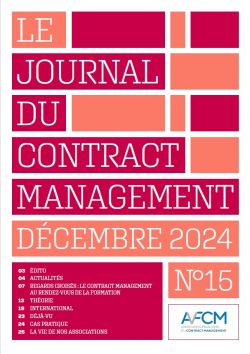
Lessonice: lessons learned for a better contract management
Interview of Matthias Zelenka, founder of Lessonice.
Why did you develop this tool ?
As most of the journeys, also our’s started with a personal pain. As an engineering professional and certified Project Manager, I am part of lessons learned sessions my entire career. And if there is one thing that has not changed ever since, it’s exactly this – the lessons learned process. We still do these review sessions at the very end, consuming valuable time and burning money, just to bury the valuable insights generated in a huge Excel spreadsheet. With little impact, hardly any actions and close-to-zero impact…..There must be a different way, we thought. We thought for quite some time about how this can be improved until the possibilities of AI connected all the loose ends.
What is the value of the tool to a company ?
We convert the natural language into a 100% data driven dashboard with statistics, risk matrix, heatmaps and time-bound analysis that helps the user to identify trends to make better decisions. Our dashboard shows all what decision makers need to take the right decisions to level up their business.

All lessons learned entered by the entire company sum up and build up this dashboard. We deliver fact-based decision baselines to set the right mitigation action and track the outcome, measure the results and show the change.
And even more, we give you feedback if the problems you have are the problems you feel/perceive (see perception index at the top/right corner of the dashboard). In a typical lessons learned workshop, the loudest people have the biggest problems…..not. With Lessonice, all entries are equally weighted and what’s even more important, we collect them when the lesson learned happens, not a few months after. A quality check at the end by a (company internal) process owner ensures that only valuable information gets collected from the anonymous entries.
What does the tool do? How does it work?
We offer a guided lessons learned capturing process that uses AI agents to interact with the user in natural language. By applying well established root cause analysis tools like 5-Why or Ishikawa, we get to the root causes of every lesson learned entry.

It takes you approx. 3-5mins to enter a lesson into the tool. This, together with the ease of use and clean front end of Lessonice, want to keep the threshold to enter lessons learned to a minimum. Every lesson learned builds up an entry like the one below, with a dedicated fishbone diagram, a risk matrix and a comprehensive summary of the conversion with the user.

In our knowledge base, a single entry can be looked up, filtered, sorted or edited. We also offer the possibility to connect existing or developed mitigations with the entries.
What are the next steps in the development ?
We are not looking just for customers – we are looking for partners. We truly believe in added value for both sides by entering long-term partnerships. Getting the utmost out of lessons learned is a marathon, not a sprint. And it all starts with mutual trust. This is why we offer a free trial and an individual proof-of-concept. In this period, we learn from each other how Lessonice can elevate your business and deliver us valuable insights on how others look at our tool.
How does it apply to contract management ?
Lessonice creates a data based learning loop in contract and claim management that not only archives knowledge, but also contributes structurally to risk minimization.
If you apply Lessonice to every change or claim your organization deals with, you can identify patterns and root causes. This allows you to set the right counter actions, for example special training for certain target groups or awareness campaigns, to either decrease the number of claims or increase the quality of claims…depending on which side of the table you sit.
The knowledge base helps you to look up specific clients, suppliers, companies, contract models etc. to help you not only to identify special issues but even more important, develop a strategy to prevent the same pitfalls. By doing so, claim management becomes preventive and not reactive.
Indeed, structured capture enables pattern recognition – e.g., that 70% of all claims with subcontractors are due to inadequate service delimitation
By measuring claim frequency, damage amounts, response times or avoidance rates, KPIs can be generated that make the impact of lessons on contract management visible
On a more specific aspect, when seting up a claim or answering to a claim, this tool helps gathering the incidents and the analysis of their root causes, leading to a stronger case.
As you know, lessons learned are very important in contract management.
-
Jean-Charles Savornin
du contract management





Laisser un commentaire